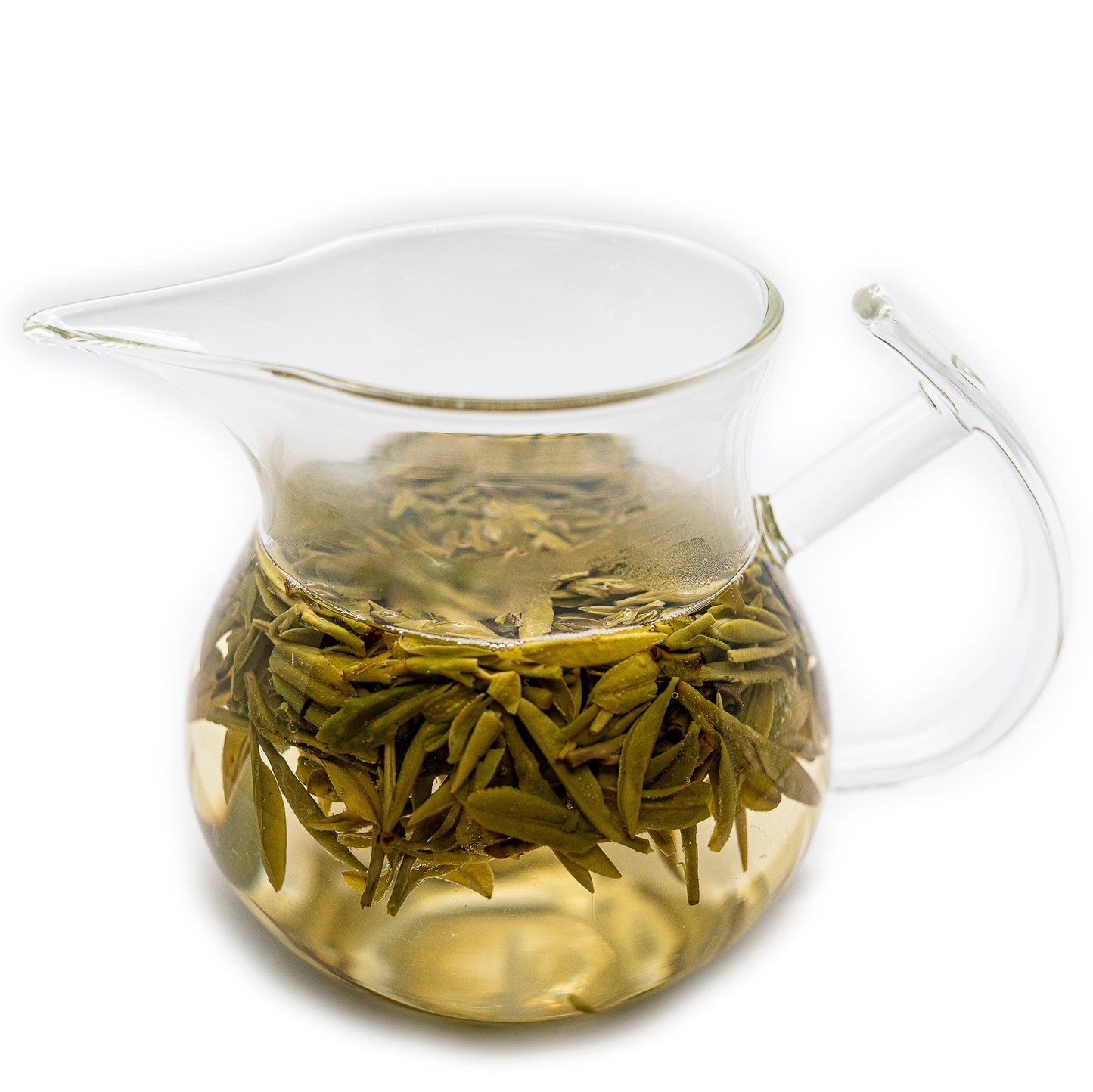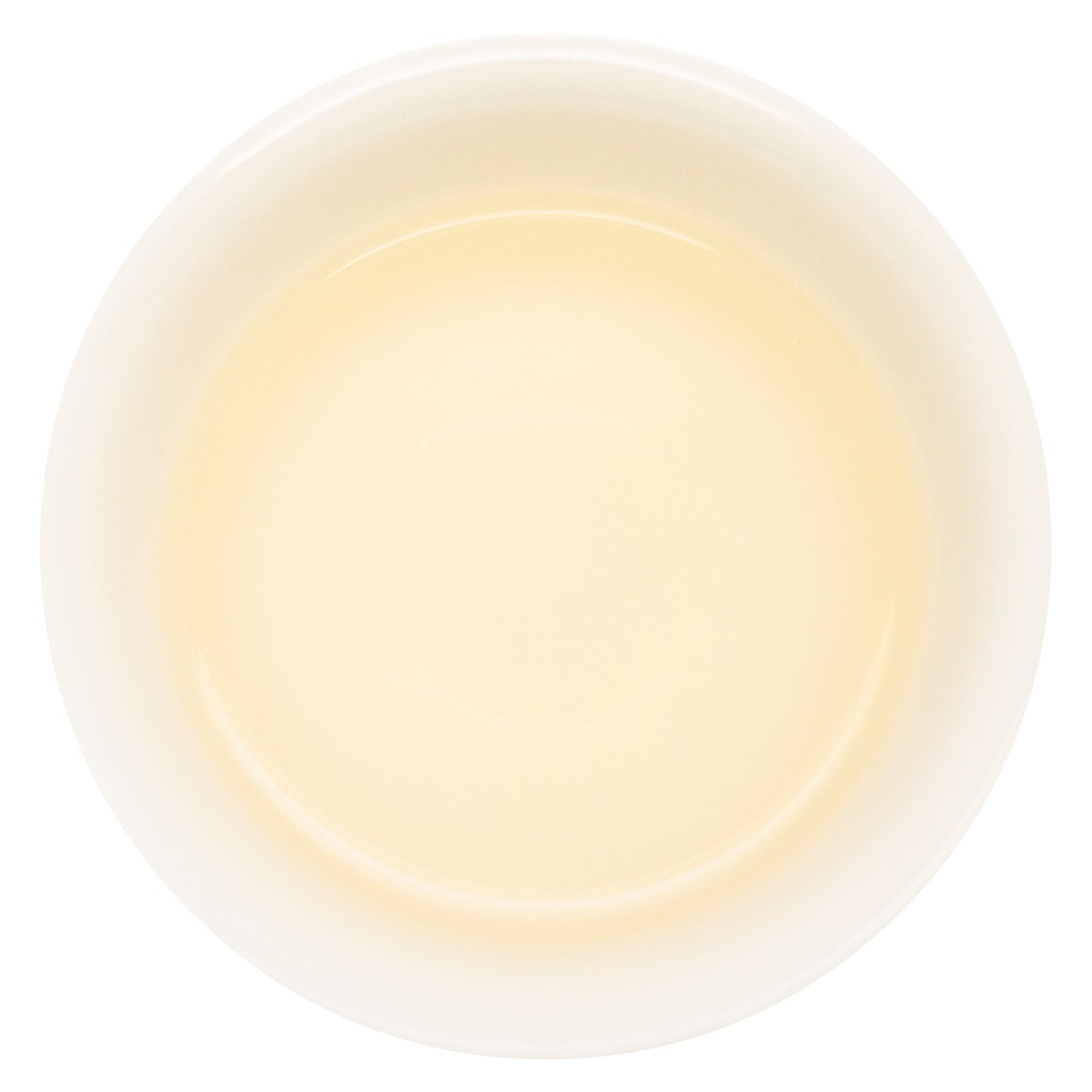Long Jing is China's most famous green tea from it's most famous terroir - Lion's Peak, Xi Hu. It's an aromatic green tea that is known for its blunt body and textbook chestnut flavor. However, a well-made Long Jing also has a gorgeous floral depth come through. We only source Long Jing from the core historical region of Shi Feng Mountain. When we drink this tea, we taste toasted nuts, gently floral notes, weighty tannins, and a sweet aftertaste.
Long Jing is China's most famous green tea. It is named after the ancient Dragon well in the Xi Hu (West Lake) region of China and is often regarded as the King Tea of China. The true origin of Long Jing is Xi Hu (West Lake). Within Xi Hu, Shi Feng mountain is the highest-ranking terroir for Long Jing. As a historically famous tea, the terroir of Long Jing is strictly defined much like that of Champagne or other fine wines. The best Long Jing comes from Xi Hu, or West Lake, in Hangzhou. Xi Hu Long Jing comes from Zhe Jiang Province most broadly before narrowing it down to Yuezhou, Qiantang, and Xi Hu, with each label describing a smaller area of land. Even within Xi Hu, there is a hierarchy in prestige. The most prestigious village is Lion, followed by Dragon, Cloud, Tiger, and finally Plum. When tea is sold, it is generally marketed as coming from the most prestigious location it can accurately claim. For example, tea from the Lion village in Xi Hu will make that clear on its packaging, but tea from the Plum village will market as Xi Hu Long Jing. The same is true of broader categories as well.
This aromatic 2022 vintage heirloom green tea is a sip to be celebrated with both floral and nutty notes present. It is a true masterpiece from the first picking of heirloom tea trees in the famed Shi Feng Shan! A rare treat.
Long Jing has a signature flat shape. It is made from a bud and one or two leaves. During the kill-green process, the fresh tea leaves are pressed and rubbed against the wok, which increases the contact of tea leaves with the wok and the leaves' temperature. This process has led Long Jing to be one of the most potent green teas in China. Furthermore, the rubbing causes Long Jing to lose all of its tea hair, which lends its nuttiness. After Long Jing is picked, it is spread out in a thin layer in the shade to sit. After this, it is stir-fried in a wok until it is nearly crisp enough to break when you touch it. Traditionally this is done by hand, but highly advanced machines have been developed which use artificial intelligence to customize the process nearly as effectively as a human being could. Because of this, this step of Long Jing production is almost always done by machine, even for very high quality. By the end of this step, the leaves have been pressed into their signature flat shape. The tea leaves are then put in a plastic bag to eliminate air and bring out more moisture from the tea. The next step involves flattening the tea once again using a difficult technique known as Hui Guo. Long Jing farmers say that it takes three years for a tea maker to learn this technique. This step involves rubbing the leaves against the wok, making sure all leaves face the same direction to prevent breakage. It is during this step that all hairs are rubbed off the tea as well. Finally, it is wrapped again in plastic bags and placed in a container with limestone for three weeks to chill the moisture out of the tea.








